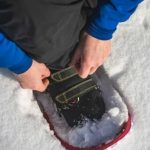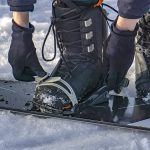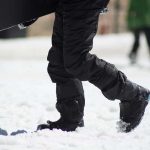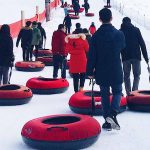Imagine this: you’re gliding through the snowy wilderness on your trusty snowmobile, reveling in the thrill of the ride. Suddenly, you notice the temperature gauge creeping up and realize that your engine is overheating.
You stop and wait for it to cool down, but what if I told you that there might be a way to avoid this inconvenience altogether? That’s right, we’re talking about running a snowmobile without a thermostat.
It may sound like an outlandish idea, but some experts believe it’s possible. Let’s take a closer look at the concept:
- A thermostat is responsible for regulating the engine temperature by controlling the flow of coolant. Without it, the engine would constantly run at its maximum temperature.
- In extremely cold conditions where the air is already frigid, some argue that a thermostat may not be necessary as the outside temperature alone can keep the engine cool enough.
- Others suggest alternative methods such as adding more coolant or installing a manual shut-off valve to regulate coolant flow.
- However, there are concerns about potential damage to the engine due to lack of proper temperature control.
So, can a snowmobile really function without a thermostat? The debate rages on among experts and enthusiasts alike.
Join us as we delve deeper into this intriguing topic and explore all sides of the argument.
Who knows, maybe one day we’ll witness snowmobiles blazing through trails with no thermostats in sight.
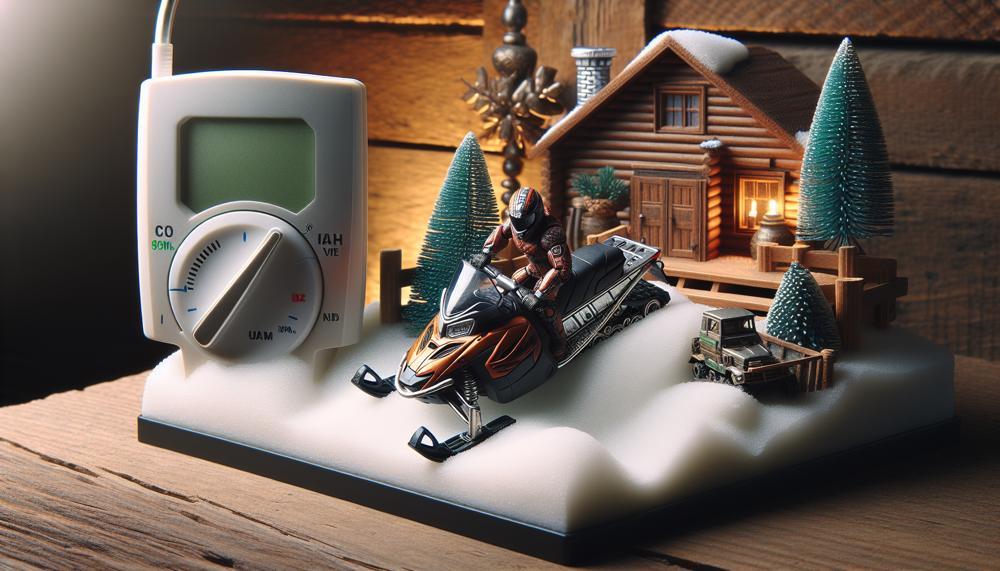
The Purpose Of A Thermostat
Contents
- 1 The Purpose Of A Thermostat
- 2 How Does A Snowmobile Cooling System Works
- 3 What Are The Two Snowmobile Engine Types
- 4 Can A Snowmobile Run Without a Thermostat?
- 5 What Could Be Causing Overheating If Not A Thermostat Fail?
- 6 Have a Safe and Enjoyable Snowmobile Season
- 7 My Favorite Gear
- 8 Check Out These Other Great Articles
- 9 Conclusion
A thermostat is an essential component in a snowmobile that plays a critical role in regulating the engine’s temperature. Without it, the engine can suffer from serious issues such as overheating, decreased fuel efficiency, and potential damage to crucial components. The main function of a thermostat is to control the flow of coolant through the engine, ensuring a consistent operating temperature.
Located near the upper radiator hose, the thermostat operates by opening and closing based on the coolant temperature. This allows for proper regulation of the engine’s temperature, preventing it from running too cold or too hot. It also aids in fuel efficiency by ensuring that the engine is not working harder than necessary to maintain an optimal temperature.
Furthermore, a properly functioning thermostat allows for quicker warm-up times, ensuring that the engine is ready to run efficiently as soon as you start your snowmobile. On the other hand, if the thermostat malfunctions, it can cause serious issues such as engine overheating and decreased fuel efficiency. This not only impacts the performance of your snowmobile but can also lead to costly repairs.
To avoid these problems, it is important to regularly check and maintain your snowmobile’s thermostat.
By ensuring its proper functioning, you can prevent potential damage to your engine and enjoy a smoother ride with improved fuel efficiency.
How Does A Snowmobile Cooling System Works
The cooling system in a snowmobile is responsible for regulating the engine’s temperature and preventing it from overheating.
Let’s delve deeper into how this system operates to ensure your snowmobile runs smoothly.
Coolant Circulation:
The snowmobile’s cooling system works by circulating a mixture of water and antifreeze, commonly known as coolant, through various components.
This coolant absorbs heat from the engine and carries it to the radiator, where it is cooled down before being recirculated back into the engine.
Components of a Snowmobile Cooling System:
The key components of a snowmobile cooling system include:
- Radiator: The radiator plays a crucial role in cooling down the hot coolant before it is recirculated back into the engine. Usually made of aluminum, it contains numerous small fins that increase its surface area, allowing for efficient dissipation of heat.
- Water Pump: The water pump is responsible for circulating the coolant through the engine and radiator. It is typically powered by a belt connected to the crankshaft of the engine.
- Thermostat: The thermostat regulates the flow of coolant and helps maintain a consistent temperature in the engine. When the engine is cold, it remains closed, preventing coolant from circulating through the radiator until reaching its optimal operating temperature.
- Hoses: Hoses connect different parts of the cooling system, allowing for the smooth flow of coolant.
Preventing Overheating:
To avoid overheating in a snowmobile, it’s essential to regularly maintain all components of the cooling system.
This includes checking for any leaks and ensuring proper levels of coolant. It’s also crucial to adhere to weight limits, use the right fuel, and be mindful of challenging terrain that can put added strain on the engine.
What Are The Two Snowmobile Engine Types
When it comes to snowmobile engines, there are two main types: 2-stroke and 4-stroke engines. These engines can also be classified based on their cooling systems and displacement sizes.
In recent years, liquid-cooled engines have become more popular in newer models, while larger engines are commonly found in high-performance trail sleds.
Each type of engine offers unique levels of performance and is used in different types of snowmobiles depending on their intended use and the terrain they will be ridden on.
While both 2-stroke and 4-stroke engines are commonly used in snowmobiles, they each have their own set of characteristics and benefits.
- 2-stroke engines are known for their simplicity and lightweight design, making them a popular choice for performance-oriented snowmobiles.
- On the other hand, 4-stroke engines are known for their smooth power delivery and fuel efficiency, making them a popular choice for trail riding and touring snowmobiles.
Can A Snowmobile Run Without a Thermostat?
Operating a snowmobile without a thermostat can result in engine overheating, decreased fuel efficiency, challenges starting in low temperatures, and reduced lubrication. These outcomes can greatly affect the functionality of the vehicle, leading to expensive repairs and inconvenience for snowmobilers. Nevertheless, there are methods to mitigate these effects and guarantee optimal performance of a snowmobile, even if a thermostat is not present.
When a snowmobile is operated without a thermostat, the engine is at risk of overheating due to the lack of temperature regulation. This can cause severe damage to the engine and its components, resulting in expensive repairs. To avoid this issue, regular maintenance and monitoring of the snowmobile’s temperature are essential. Additionally, using high-quality coolant and ensuring proper fluid levels can help prevent overheating and maintain optimal engine performance.
Another consequence of running a snowmobile without a thermostat is decreased fuel efficiency. Without a thermostat to regulate the engine’s temperature, it may run too hot or too cold, leading to inefficient fuel consumption. To counteract this effect, snowmobilers can adjust their driving habits by avoiding aggressive acceleration and maintaining steady speeds. This will help conserve fuel and reduce overall costs.
In addition to engine issues, operating a snowmobile without a thermostat can also cause difficulties starting in cold weather. The lack of temperature control can make it challenging for the engine to start during freezing temperatures. To address this problem, snowmobilers can use an electric start or preheat the engine before attempting to start it. Regularly checking and replacing spark plugs can also help ensure smooth starts in cold weather.
Lastly, without a thermostat, a snowmobile’s lubrication may be affected, leading to increased wear and tear on its components. This can result in costly repairs if left unaddressed. To prevent this, regular oil changes and using high-quality oil are crucial for maintaining proper lubrication and protecting the engine from damage.
What Could Be Causing Overheating If Not A Thermostat Fail?
Snowmobiles are a popular mode of transportation in areas with heavy snowfall. However, they are not immune to overheating issues. There are several factors that can contribute to this issue, including riding on shallow or hard snow conditions, malfunctions in the cooling system, and modifications that increase power but decrease cooling efficiency.
One of the leading causes of snowmobile overheating is riding in shallow or hard snow conditions. When the snow is not deep enough, it does not provide enough resistance to cool the engine. The same goes for hard-packed snow, which does not allow for enough air to pass through the heat exchanger and dissipate heat properly.
Another common cause of overheating is malfunctions in the cooling system. A broken water pump or clogged radiator can prevent adequate coolant flow, resulting in an overheated engine. Regular maintenance and inspections can help prevent these issues from occurring.
Modifications to a snowmobile can also lead to overheating. While increasing power may seem like a good idea, it can decrease cooling efficiency. For example, adding a turbocharger or changing the fuel mapping can put additional strain on the engine and cause it to overheat more easily.
To prevent overheating in your snowmobile, it is essential to regularly maintain your vehicle and ride on trails with sufficient snow coverage. This will ensure that the engine has enough resistance and airflow to stay cool while in use.
Have a Safe and Enjoyable Snowmobile Season
As you gear up for your adventures, keep these important safety precautions in mind to ensure a safe and enjoyable experience.
| Gear Up with Proper Safety Gear | Before hitting the snow trails, make sure you are properly equipped with safety gear. A DOT-approved helmet, goggles or face shield, insulated gloves, snowmobile suit, and boots are all essential for a safe and comfortable ride. In case of any accidents, these gears can make a huge difference in preventing serious injuries. |
| Get Familiar with Your Snowmobile | Prior to your ride, take the time to read through the owner’s manual and get familiar with your snowmobile. Practice in a safe environment to understand the location of key components such as the throttle and brakes. This will not only improve your handling skills but also boost your confidence while riding. |
| Know Your Limits | Always ride within your abilities and avoid risky maneuvers or tackling terrains beyond your skills. This can prevent accidents and injuries caused by lack of experience or control. |
| Stick to Designated Snowmobile Trails | Designated snowmobile trails are regularly maintained for optimal riding conditions and safety. It is crucial to stick to these trails instead of venturing into unknown or unsafe areas. |
| Ride in Groups | Riding with a group not only adds camaraderie but also enhances safety. Riding with others allows for assistance in emergencies or breakdowns, maintaining distance between riders to avoid collisions, and informing someone of your riding plans. |
| Check Weather Conditions | Always check weather conditions before heading out on a ride. This can help prevent accidents caused by reduced visibility or unexpected obstacles due to weather conditions. Stay alert during the ride and adjust accordingly. |
| Say No to Alcohol and Drugs | Never operate a snowmobile under the influence of alcohol or drugs. These substances can impair judgment and coordination, leading to accidents and injuries. |
| Carry Essential Safety Items | Make sure to carry essential safety items with you while snowmobiling. This includes a first aid kit, cell phone in a waterproof case, map and compass, extra food and water, and tools and spare parts. These items can make a significant difference during emergencies or if you become lost or stranded. |
My Favorite Gear
When it comes to snowmobiling, having the right gear is essential for staying warm, comfortable, and safe on the trails. In this section, I will share my top gear recommendations and why they are crucial for a successful snowmobiling experience.
- First and foremost, a good snowmobile jacket is a must-have item. It not only provides insulation against the cold and wind, but also protects against snow and moisture. Look for a jacket that is both waterproof and has a hood for added warmth in the head and neck area. Trust me, you don’t want to be caught without a hood on a freezing day.
- Next up are waterproof pants. These are crucial for keeping your lower body dry and warm while riding. Look for durable pants that can withstand the elements and keep you protected from snow, sleet, and rain.
- Gloves are another essential item for snowmobiling. They not only protect your hands from frostbite but also provide a good grip on the handlebars. Make sure to choose gloves specifically designed for snowmobiling, with added insulation and grip on the soles to prevent slipping.
- Keeping your feet warm and comfortable is also important while snowmobiling. That’s where snowmobile boots come in. These boots are specially designed to keep your feet warm and provide grip on the machine’s rails. Don’t forget to invest in a good pair of boots to make your ride more enjoyable.
- Safety should always come first, so wearing a helmet while snowmobiling is non-negotiable. There are both full-face and open-face options available, so choose whichever you feel most comfortable with. Helmets not only protect against potential head injuries but also keep your head warm and shielded from wind and snow.
- Goggles are another important gear item for snowmobiling. They not only provide clear visibility in different light conditions but also protect your eyes from UV rays, snow, and debris. Make sure to invest in a quality pair of goggles for a safe and enjoyable ride.
- Layering your clothing is crucial for regulating body temperature and staying warm in extreme cold. I recommend wearing moisture-wicking base layers made of synthetic materials or natural fibers (avoid cotton). You can also add mid-layers like sweaters or light jackets for extra warmth.
- In addition to the essential gear items mentioned above, there are also optional gear items that you may find useful. These include body armor for added protection during falls, a backpack to carry extra supplies, and snowsuits that combine pants and jackets into one item.
Check Out These Other Great Articles
Snowmobiling is an exhilarating and widely popular winter activity, but it also comes with its own set of risks and responsibilities.
In addition to researching whether a snowmobile can function without a thermostat, there are also other crucial aspects related to snowmobiling that you should explore in order to guarantee a safe and enjoyable riding experience.
Here are some additional resources and articles that you should consider while conducting your research on snowmobiling:
| Snowmobile Safety Tips | Choosing the Appropriate Gear for Snowmobiling | How to Maintain Your Snowmobile in Top Condition |
| Understanding Snowmobile Laws and Regulations | How to Responsibly Ride in the Backcountry | The Dos and Don’ts of Snowmobiling Etiquette |
| Safety Guidelines for Riding on Frozen Lakes and Rivers | Dealing with Emergencies and Breakdowns While Snowmobiling | How to Prepare for Various Weather Conditions While Snowmobiling |
| Exploring New Snowmobiling Destinations and Trails | Joining a Snowmobiling Club or Group for Added Safety and Fun | The Advantages of Taking a Snowmobiling Course or Training |
| How to Plan a Safe and Enjoyable Multi-Day Snowmobile Trip | Maintaining Environmental Awareness While Snowmobiling | Tips for Staying Warm and Comfortable on Long Snowmobiling Rides |
| Top Brands and Equipment for an Enhanced Snowmobiling Experience | The History and Evolution of Snowmobiling | The Thrill and Adrenaline Rush of Snowmobiling Racing |
Also Read: Can You Use Snow Tubes For Water Tubing?
Conclusion
In conclusion, the notion of running a snowmobile without a thermostat may seem implausible, but it is a topic that continues to ignite discussions among experts and enthusiasts.
While some argue that extreme cold conditions may render a thermostat unnecessary, others propose alternative methods such as adding more coolant or installing a manual shut-off valve to regulate engine temperature. However, concerns about potential damage to the engine remain.
A thermostat plays an essential role in maintaining the engine’s temperature and ensuring optimal performance. It also aids in fuel efficiency and prevents overheating, which can result in costly repairs. Understanding how a snowmobile cooling system operates and regularly maintaining all its components is crucial for preventing overheating.
When it comes to snowmobile engines, there are two main types: 2-stroke and 4-stroke engines. Each offers distinct levels of performance and is utilized in different types of snowmobiles depending on their intended use and terrain.
While operating a snowmobile without a thermostat can have significant consequences, they can be mitigated with proper maintenance and care. Factors such as riding in shallow or hard snow conditions, malfunctions in the cooling system, and modifications that decrease cooling efficiency can also contribute to overheating issues.
To ensure an enjoyable ride through the snowy wilderness on your trusty snowmobile without any worries of overheating, regular maintenance and proper care are paramount.


